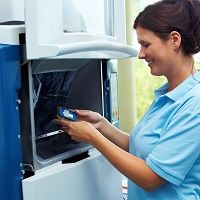Partnership Will Boost Education on Digital Techniques in Dentistry
A new partnership will commit $1.25 million to an initiative to increase dental education around CAD/CAM techniques.

The field of computer-aided design and computer-aided manufacturing (CAD/CAM) has been around for decades, but it has been adopted at a glacial pace. Data from the American Dental Association, from the American College of Prosthodontists, and others suggest that CAD/CAM is used in only 15% percent of dental practices in the US. The ACP suggests that the underlying cause of the slow adoption of digital dentistry was the lack of education and training about the techniques and its potential benefits to patients.
Now, a partnership between Henry Schein, Inc., the world’s largest provider of healthcare products and services to office-based dental, animal health, and medical practitioners, and the American College of Prosthodontists Education Foundation (ACPEF) will commit $1.25 million to an initiative to increase dental education around CAD/CAM techniques.
CAD/CAM improves the design and creation of dental restorations, including prostheses such as crowns, crown lays, veneers, inlays and onlays, dental implant restorations, and dentures. It can increase the speed of design and creation; increasing the convenience or simplicity of the design, creation, and insertion processes; and making possible restorations and appliances that otherwise would have been unlikely. Yet, its adoption has been slow and painstaking, and the added training dentists must pursue to be able to implement it effectively have meant higher fees for patients and a reluctance on the part of some practicing dentists and medical students to take advantage of the technology.
“We believe CAD/CAM technology enhances dentistry and we are pleased to support this initiative, which will offer dental students the education and training needed to effectively apply this exciting technology in their future work,” noted Henry Schein Chairman and CEO Stanley M. Bergman in a press release.
CAD/CAM has its benefits, but it is by no means a panacea. A 2009 article in the Dental Materials Journal authored by dentists who had been using the technology for more than 20 years pointed out some of its potential drawbacks and noted that, “...in reality, dental CAD/CAM is neither simple nor easy.” Among those drawbacks noted by the researchers is that total cost and operation time had not yet been significantly enhanced using CAD/CAM as opposed to traditional dentistry. The authors noted, however, that the technology also offers significant advantages, including the durability of the devices and prosthetics produced.
The technology continues to develop, of course, and the enhanced training opportunities as part of this partnership will likely increase its adoption.